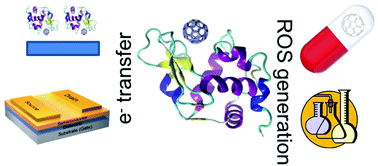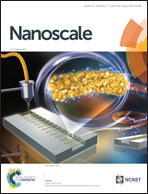Proteins as supramolecular hosts for C60: a true solution of C60 in water
Abstract
Hybrid systems have great potential for a wide range of applications in chemistry, physics and materials science. Conjugation of a biosystem to a molecular material can tune the properties of the components or give rise to new properties. As a workhorse, here we take a C60@lysozyme hybrid. We show that lysozyme recognizes and disperses fullerene in water. AFM, cryo-TEM and high resolution X-ray powder diffraction show that the C60 dispersion is monomolecular. The adduct is biocompatible, stable in physiological and technologically-relevant environments, and easy to store. Hybridization with lysozyme preserves the electrochemical properties of C60. EPR spin-trapping experiments show that the C60@lysozyme hybrid produces ROS following both type I and type II mechanisms. Due to the shielding effect of proteins, the adduct generates significant amounts of 1O2 also in aqueous solution. In the case of type I mechanism, the protein residues provide electrons and the hybrid does not require addition of external electron donors. The preparation process and the properties of C60@lysozyme are general and can be expected to be similar to other C60@protein systems. It is envisaged that the properties of the C60@protein hybrids will pave the way for a host of applications in nanomedicine, nanotechnology, and photocatalysis.

- This article is part of the themed collection: 2018 Nanoscale HOT Article Collection


 Please wait while we load your content...
Please wait while we load your content...